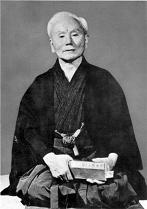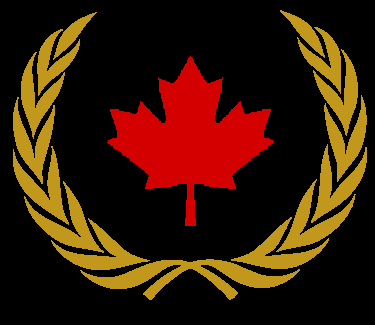In 1971, the Canadian Yudansha Karate Association was founded by André Langelier, Fernand Cl�roux and George Sylvain. The name was eventually changed non-officially around 1972-1973 for the Canadian Karate Association, C.K.A. that was basically form with clubs from Quebec and Ontario.
The creation of the CKA caused the Ottawa-Hull region to be separated from Mr.Tsuroka's organization which was the National Karate Association (NKA), founded in 1964. Contact, however, was not severed with the Honbu (Head office for an Organization) dojo in Japan. Dr. Chitose and one of his principal student, Yamamoto, they both visited the Ottawa area in 1972 and 1974.

Here is a brief explication of the history of Karate in general and it's origines. (adopted by « Karate-do Kyohan » by Gichin Funakoshi).

Karate's evolution goes back more than a thousand years. During that time, a physical training system was built to raise the physical and mental strength and the determination of the monks. Those exercises became the foundation for the majority of Chinese martial arts. The teaching methods were spread throughout many locations and wore the name of Shorin Ji Kempo. This method, that eventually reached the Ryukyu Islands and became Okinawa-te, the precursor of modern karate.
Okinawa is a small island that was within the groups of islands that was known back then as the modern Japan. In the beginning, karate martial art was known as “Te” or “hand”. There is no documented references that permits us to retrace the exact date of the beginning of Karate, but was believe that karate started very early in Okinawa. Karate was secretly practiced in Okinawa since the beginning of 1600, back then the national government had established a law restraining any citizens to have any weapons in there possession.
With the years, “Te” continued to developed it’s self in tree different city’s of Okinawa: Shuri, Naha and Tomari. Each of these cities had a specific location to meet within different groups of society: the kings and the nobles, the merchants and the businessmen and the farmers and the fisherman. In consequence, different styles of Karate were developed and associated to each of the three cities: Shuri-Te, Nah-Te and Tomari-Te. These forms assemble where called Okinawa-Te or Tode « Chinese hand ».
The writing Chinese character “Tode” could also be pronounced “Kara” and the name “Te” was replaced by Karate-jutsu or “ Chinese martial art”. A bit later, Gichin Funakoshi replaced the name by Karate-Do and adopted an alternative signification for the Chinese character kara “ empty”. From that moment, the word karate meant “empty hand”. The word “Do” in karate-do signified "the way" or "the road" and contains the spiritual values and morals that were based on the discipline and philosophy of karate.
Now a day, there are five principal styles of karate in Japan: Goju-Ryu, Shito-Ryu, Shotokan, Wado-Ryu and Chito-Ryu.
Goju-Ryu was develop from Naha-Te, his principal popularity is due to the success of Kanryo Higashionna (1853-1915). Higashionna opened a dojo in Naha using 8 different styles that came from China. His best student, Chyojun Miyagi (1888-1953), founded Goju-Ryu « hard soft way » in 1930. The Goju-Ryu puts a lot of emphasis on the soft combination of blocking techniques with fast and powerful counter attacks, all was executed in a very fast follow up technique.
In 1928, Shito-Ryu was founded by Kenwa Mabuni (1889-1952) and influenced by Naha-Te and Shuri-Te. The name Shito comes from the combination of Japanese characters associated with the Mabuni teachers: Itosu Ankoh and Kanryo Higashionna. The Shito-Ryu schools used a lot of kata’s (about 60) and the style was best known for the powerful execution of techniques.
Shotokan was founded by Gichin Funakoshi (1896-1957) in 1938, in Tokyo. Funakoshi is considered has being the founder of modern karate. Born in Okinawa, Funakoshi started his studies in karate with Yasutsune Azato, one the biggest martial artist expert in Okiniwa. In 1921, Funakoshi was the first to introduce karate in Tokyo. In 1936, around the age of 70, he opened his own dojo. It wore the same name, as the pen that he used to sign his poems with at a young age. The Shotokan karate is characterized by straight and powerful line techniques and strong and solid stance.
Wado-Ryu “Voice of harmony” was developed between 1922 and 1929 and registered in 1939, as a system of karate coming from ju-jitsu and karate, by Hironori Ohtsuka (1892-1982). Sensei Ohtsuka was the first martial artist to be honoured by the emperor of Japan with a special title and medal for his contribution to Karate-Do. He was also an assistant to Gichin Funakoshi. This style of Karate combined the basic movements of ju-jitsu with the spatial techniques emphasizing on flexibility, the way of harmony and spiritual discipline.
Chito-Ryu was developed by the master of Karate of Okinawa, Dr. Tsuyoshi Chitose (1898-1984). After the war, he moved to Tokyo in Kumamoto. In March 1946, he opened the karate-judo Yosei-kan in the city of Kikuchi, Kumamoto. These days, the social chairman of Chito-Kai is in the city of Kumamoto. In 1952, Dr. Tsuyoshi Chitose gave the name of “All Japan Chito-Kai” to his group and the name of “Chito-Ryu Karate-Do” to his techniques style. He based his teaching on the depths of his knowledge that he had learned while studying in Okinawan Shorei-Ryu (Naha-te from Aragaki Ou) and Shorin-Ryu (Shuri-te from Kiyan Chotoku) karate and on his medical knowledge of philosophy to form the Chito-Ryu style. The terms in the Chito-Ryu name means Chi=1000 (one thousand years), To=Tang for the dynasty in China, Ryu= style. The naming of Chito-Ryu honours the tradition of the civilians of Okinawa and to the roots of karate that goes back to more than a thousand years in China.
Those five styles became the major styles of karate in Canada with Chito-Ryu as founding style for the C.K.A.
Since January 2015, Cléroux Karaté Dojo is under the CLEROUX KARATE-DO style.
The C.K.A. reserves all rights to remove or comite changes at any time without any notice. Copyrights 2008 |

